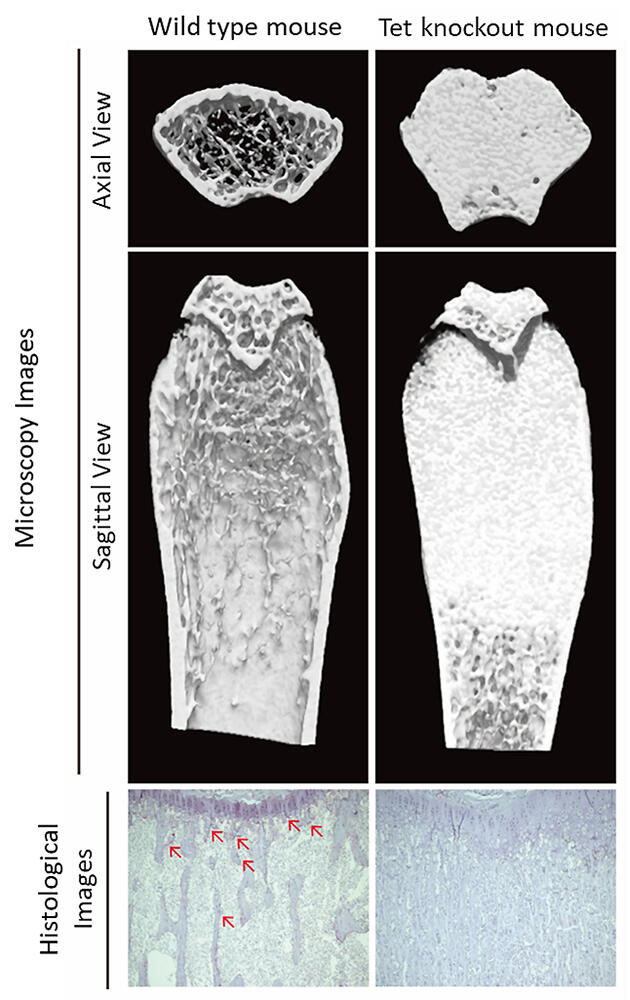The research group of Professor Keizo Nishikawa and colleagues at the Graduate School of Life and Medical Sciences, Doshisha University, successfully measured the oxygen tension in the osteoclasts within bones of live mice at the single-cell level for the first time using a chemical probe to detect oxygen and two-photon excitation microscopy to assess live image bone tissues. The results were published online in the October 18, 2021 issue of EMBO Reports.
Previously, the research group has reported that oxygen is consumed during osteoclast formation from respective cellular sources, and so described a new mechanism of osteoclast formation. However, it is well-known that the interior of bones is hypoxic. Based on the result of analysis, osteoclasts were maintained at an oxygen concentration of 2.3 to 4.8% in vivo. The researchers observed that decreasing the oxygen concentration within this range suppressed osteoclast formation and increased bone mass.

(Credit: EMBO Reports)
On analyzing the molecular mechanism through which oxygen is utilized for osteoclast formation, the researchers observed that the hypoxia-inducible factor (HIF)-mediated hypoxia adaptation was not crucial. Instead, the oxygen utilization during osteoclast formation involved the oxidation of methylated DNA. Furthermore, on analyzing mice lacking "Tet", an enzyme responsible for the oxidation of methylated DNA, almost no osteoclasts were formed, while bone mass was significantly increased. Based on these results, the researchers proposed a new mechanism through which osteoclasts respond to oxygen, sensing oxygen via DNA demethylation.
According to Professor Nishikawa, prior to the current research, experiments on cultured cells were extremely oxygen-rich, and it was unclear whether this environment represented a physiological phenomenon. Hence, the researchers developed a measurement system to determine the true oxygen concentration in vivo. However, the reverse of the previously held idea was detected. Hence, experiments using cultured cells need to be performed cautiously considering this finding.
This article has been translated by JST with permission from The Science News Ltd.(https://sci-news.co.jp/). Unauthorized reproduction of the article and photographs is prohibited.



